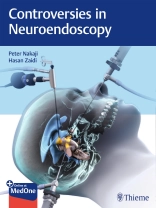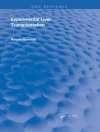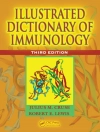<p><strong><em>A unique perspective on neuroendoscopic versus microsurgical techniques from world-renowned neurosurgeons</em></strong></p><p>In the last two decades, neuroendoscopy has evolved from a fringe neurosurgical tool to an established subspecialty focusing on the treatment of diverse cranial and spinal diseases. Today, neuroendoscopic technology is widely used to treat supratentorial diseases, skull base pathologies, craniocervical diseases, and spinal pathologies. Despite the expanded use of neuroendoscopy across several subspecialties, its benefits and disadvantages versus those of traditional microsurgical methods remain highly controversial. Contradictory evidence in the neurosurgical literature adds to the surgical decision-making challenges for veteran and novice practitioners alike.<p><cite>Controversies in Neuroendoscopy</cite> by Peter Nakaji and Hasan Zaidi fills an unmet need for a book encompassing best practices, patient selection, and limitations and advantages of neuroendoscopic surgical approaches. Each case presents firsthand knowledge of internationally esteemed neurosurgeons, with a moderator, an endoscopic expert, and an expert in traditional microsurgical approaches. The unique discussion of neuroendoscopy versus microsurgery enables readers to compare the benefits and pitfalls of endoscopic and open microsurgical procedures for a wide range of conditions.<ul><li>In-depth comparative guidance on applications of the flexible endoscope, rigid endoscope, 3D endoscope, and high-definition 2D endoscope versus the microscope</li><li>A full spectrum of neurological conditions across the age continuum with comparative approaches for skull base surgery, pituitary surgery, hydrocephalus, spinal surgery, peripheral nerve surgery, and arachnoid cyst fenestration</li><li>Radiological imaging and intraoperative photographs enhance cases and provide precise, insightful technical guidance</li><li>High-quality color illustrations from the skilled medica
Cuprins
<p><strong>I History and Evolution of Neuroendoscopy</strong><br>1. History and Evolution of Neuroendoscopy<br><strong>II Skull Base Surgery</strong><br>2. Microscopic versus Endoscopic Nasal Morbidity and Quality of Life after Skull Base Surgery<br><strong><em>A. Pituitary Tumor Surgery</em></strong><br>3. Pituitary Tumor Surgery: Endoscope versus Microscope—Moderator<br>4. Pituitary Tumor Surgery: Endoscope versus Microscope—Microscope<br>5. Pituitary Tumor Surgery: Endoscope versus Microscope—Endoscope<br>6. Endoscopic Approach to the Infratemporal Fossa<br><strong><em>B. Anterior Skull Base Tumors</em></strong><br>7. Anterior Skull Base Tumors—Microscope<br>8. Anterior Skull Base Tumors—Endoscope<br><strong><em>C. Craniovertebral Junction</em></strong><br>9. Endoscopic versus Microscopic Approach to the Craniovertebral Junction—Microscope<br>10. Craniovertebral Junction—Endoscope<br><strong>III Paraventricular Lesions</strong><br>11. Endoscopic Third Ventriculostomy versus Ventriculoperitoneal Shunting<br><strong><em>D. Management of Colloid Cysts</em></strong><br>12. Management of Colloid Cysts: Moderator<br>13. Management of Colloid Cysts: Microscope<br>14. Management of Colloid Cysts: Endoscope<br>15. Intracranial Arachnoid Cyst Fenestration versus Shunting<br>16. Endoscopic Aqueductal Stenting<br><strong>IV Neurovascular</strong><br><strong><em>E. Decompression of Cranial Nerves</em></strong><br>17. Decompression of Cranial Nerves: Microscope<br>18. Decompression of Cranial Nerves: Endoscope<br><strong><em>F. Clipping of Cerebral Aneurysms</em></strong><br>19. Clipping of Cerebral Aneurysms: Moderator<br>20. Clipping of Cerebral Aneurysms: Microscope and Endoscope<br><strong><em>G. Evacuation of Intraparenchymal Hemorrhage</em></strong><br>21. Evacuation of Intraparenchymal Hemorrhage: Moderator<br>22. Evacuation of Intraparenchymal Hemorrhage: Microscope<br>23. Evacuation of Intraparenchymal Hemorrhage: Endoscope<br><strong><em>H. Approaches to Brainstem Cavernous Malformations</em></strong><br>24. Approaches to Brainstem Cavernous Malformations: Microscope<br>25. Approaches to Brainstem Cavernous Malformations: Endoscope<br><strong>V Tumors</strong><br>26. Open versus Endoscopic Supracerebellar Infratentorial Approaches<br><strong><em>I. Intraparenchymal Brain Tumors</em></strong><br>27. Intraparenchymal Brain Tumors: Moderator<br>28. Intraparenchymal Brain Tumors: Microscope versus Endoscope<br><strong>VI Pediatrics</strong><br>29. Surgical Management of Hypothalamic Hamartomas<br><strong><em>J. Craniosynostosis Surgery</em></strong><br>30. Craniosynostosis Surgery: Moderator<br>31. Craniosynostosis Surgery: Microscope and Endoscope<br><strong>VII Spine and Peripheral Nerves</strong><br><strong><em>K. Cervical Diskectomy/Foraminotomy</em></strong><br>32. Cervical Diskectomy/Foraminotomy: Moderator<br>33. Cervical Diskectomy/Foraminotomy: Microscope<br>34. Cervical Diskectomy/Foraminotomy: Endoscope<br><strong><em>L. Thoracic Diskectomy</em></strong><br>35. Thoracic Diskectomy: Moderator<br>36. Thoracic Diskectomy: Microscope and Endoscopic<br>37. Spinal Lumbar Diskectomy: Open versus Endoscopic<br><strong><em>M. Endoscopic versus Open Carpal Tunnel Release</em></strong><br>38. Endoscopic versus Open Carpal Tunnel Release: Moderator<br>39. Endoscopic versus Open Carpal Tunnel Release: Endoscope<br><strong>VIII Technology</strong><br>40. 3D Endoscope versus High-Definition 2D Endoscope<br>41. Flexible versus Rigid Neuroendoscopy<br>42. Endoscopic Port Surgery: Advantages and Disadvantages<br>43. Future of Neuroendoscopy</p>












